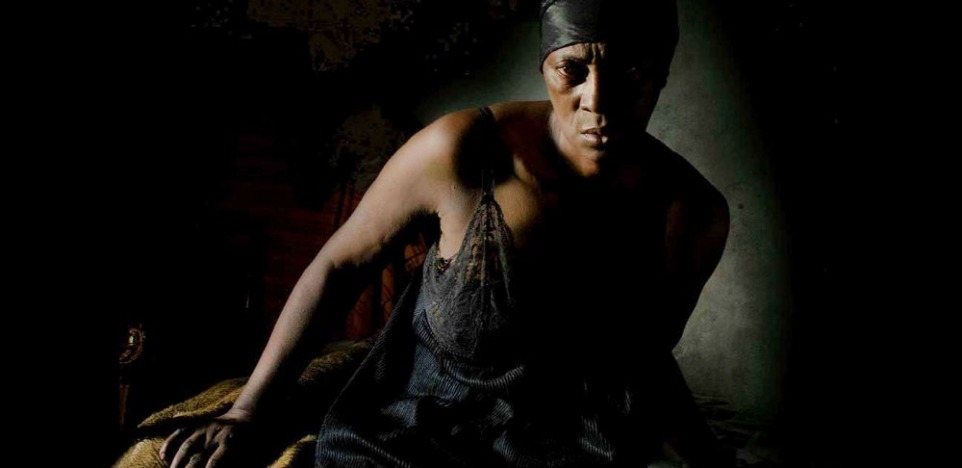Vitalina Verela can be screened through Grasshopper Film’s arrangement with art house theaters. Go here to find out how to see the film virtually.
It will be impossible for any viewer to forget Vitalina Varela’s face. Framed beautifully by Portuguese filmmaker Pedro Costa and cinematographer Leonardo Simões and often peering out of deeply dark shadows, Verela is the picture of a haunting mystic, without even trying to be anything but herself. The film’s loving lensing follows her determined journey to Fontainhas, an impoverished Lisbon shantytown, to bury a man who left her years before he died. As she traverses both the town and her inner life, Varela becomes a symbol of debilitating regret and fresh mourning. The film immerses its audience in a world both distant and distancing, plumbing the depths of a distinct woman’s pain and inviting uncommonly intimate ruminations on loss.
Nothing much happens in Vitalina Varela and its meditative rhythms become a liturgical exercise all their own, every single beat of which is stunning. Sometimes the beats are stunningly moving, sometimes stunningly boring, but even those who feel put off by the slow-as-molasses storytelling will feel something spiritual happening. The film’s pull is simply that unavoidable.
By way of plot, Varela has flown in from the Cabo Verde Islands, a former Portuguese colony, to confront her long-defected husband in Lisbon. The trouble is that he died three days before she arrived, so Varela is too late for any kind of catharsis and is now in a foreign place filled with her husband’s people, none of whom seem to really much want her there. More than once, Varela is told that there is nothing for her in Lisbon, and doors and hearts remain closed and locked to her. In response to this dismissal, Vitalina Varela simply wanders, as does Varela herself, haunting this new home as she is haunted by the memories of a man she both loves and despises.
The most regular relationship that Varela establishes is with an ailing priest (played by the always-intriguing Costa regular Ventura) who keeps his sanctuary open, even though no one comes around to pray anymore. The priest is filled with remorse, for things both clear and unclear, and he seems intent on Varela learning Portuguese in order for her to communicate with her departed beloved. In return, Varela is intent on the priest helping her with a ritual for her own closure. The two embark on a tenuous partnership that might keep both of them from fully descending into the abyss of lonely desperation.
Every attempt to glean overt themes from Vitalina Varela is, at best, conjecture, as the film’s world is so murky as to stay nearly unknowable. But this is one of the film’s most affecting features. Like an obscure scrap of sacred text, Varela’s story is a canvas onto which countless reflections on remorse can be projected. The specificity of locale and character is always present, but Costa’s obscure style gives these specific aspects near-mythic power. By refusing to fill in gaps, by leaving questions unanswered, by allowing time to nearly stop and space to nearly disappear into darkness, Costa demands that viewers mine for meaning, both in the film and in themselves.
There are glimpses of light in Vitalina Varela, both literal and metaphorical, and these brief moments both alleviate the opaque tension and further complicate it. Varela’s dark night of the soul seems endless, a cycle of self-discovery and self-defeat both unique and universal. But constant in this cycle are shots of Varela’s unmoving and unfazeable face, a portrait of a seeker who refuses to allow the shadows to completely consume her, a model of persistence, even if she doesn’t yet know what she’s hoping to find. Even in the uncertainty, her face and her drive will linger in the memory like the most unexpectedly inspirational prophet, calling witnesses to dig deeper, to hope relentlessly, and to open new doors to interrupt paralyzing cycles and lead somewhere new.
